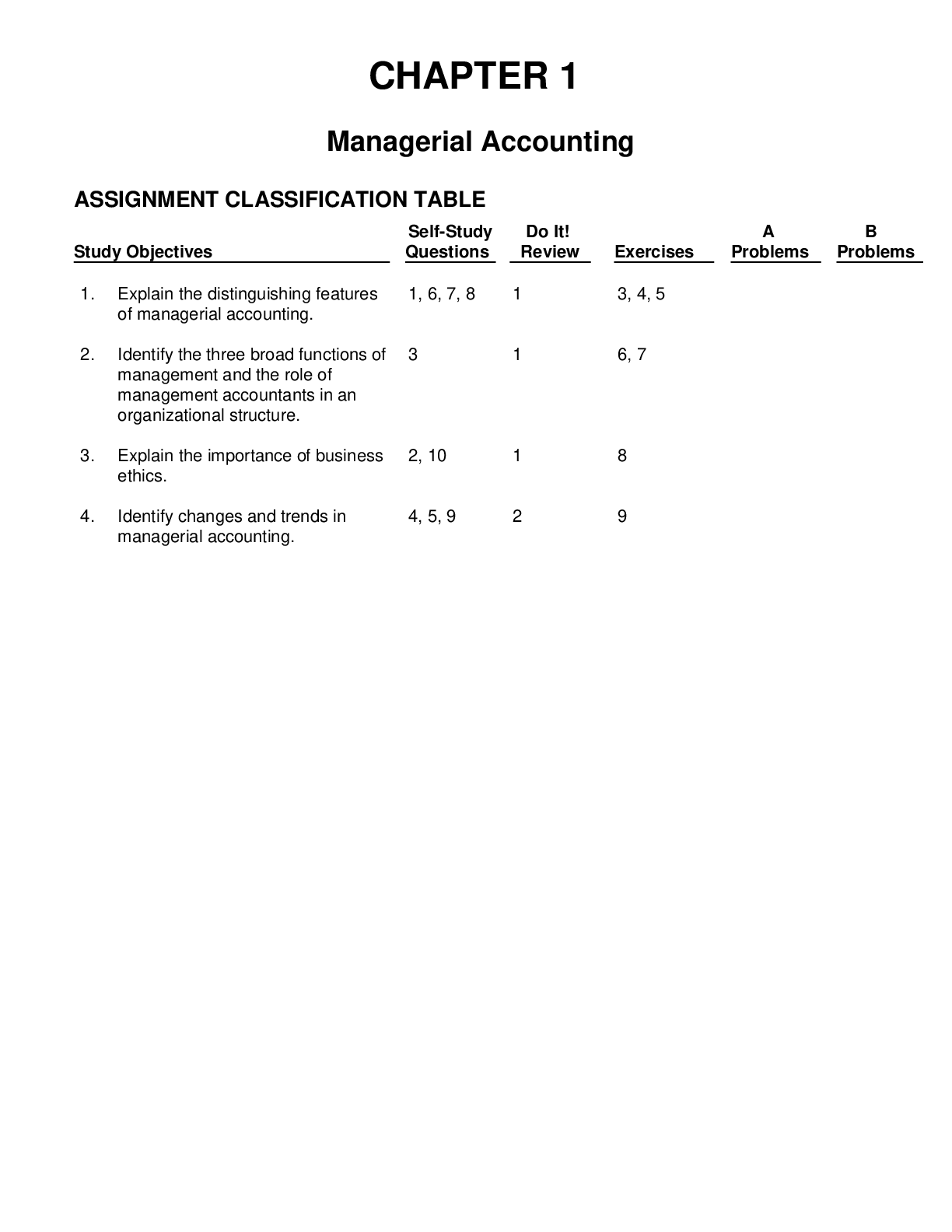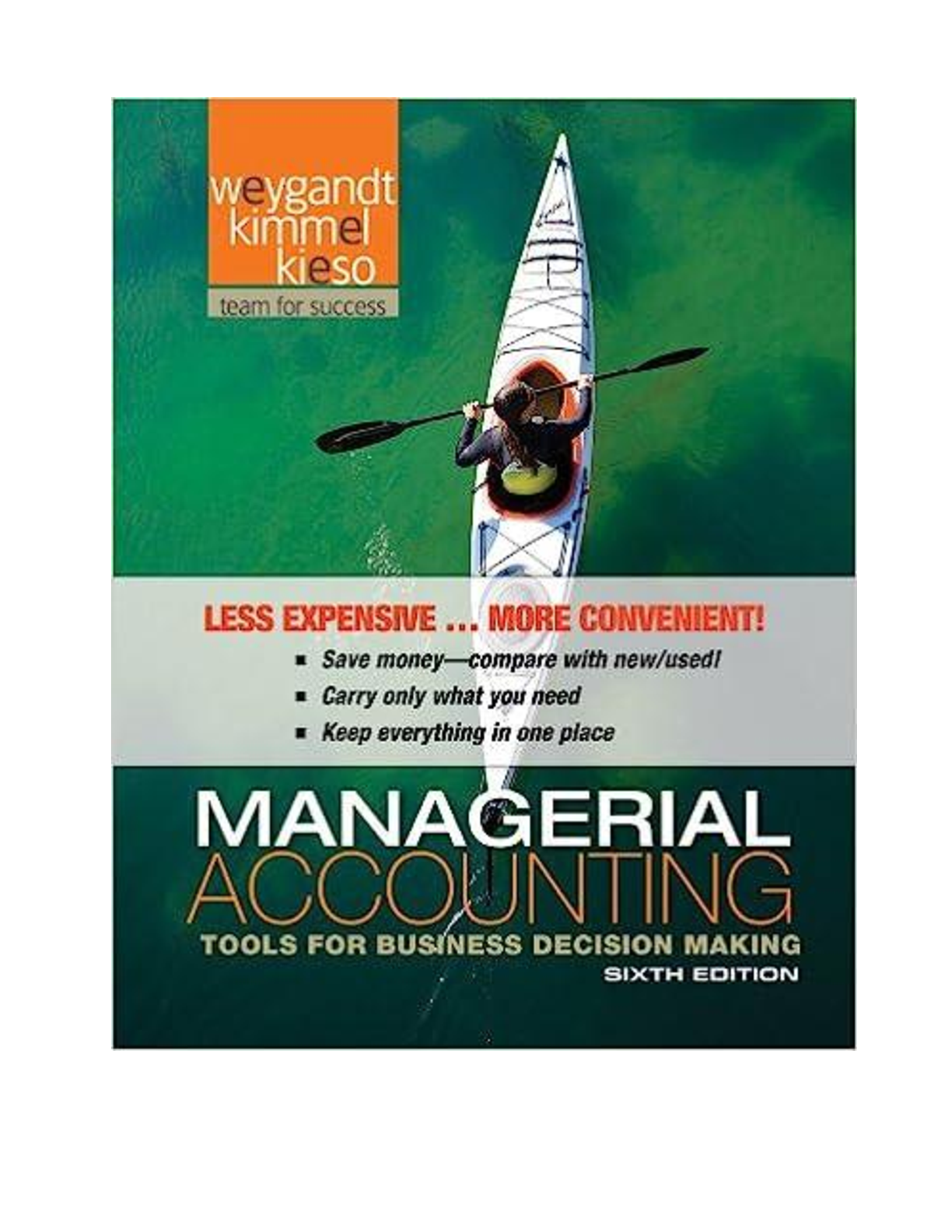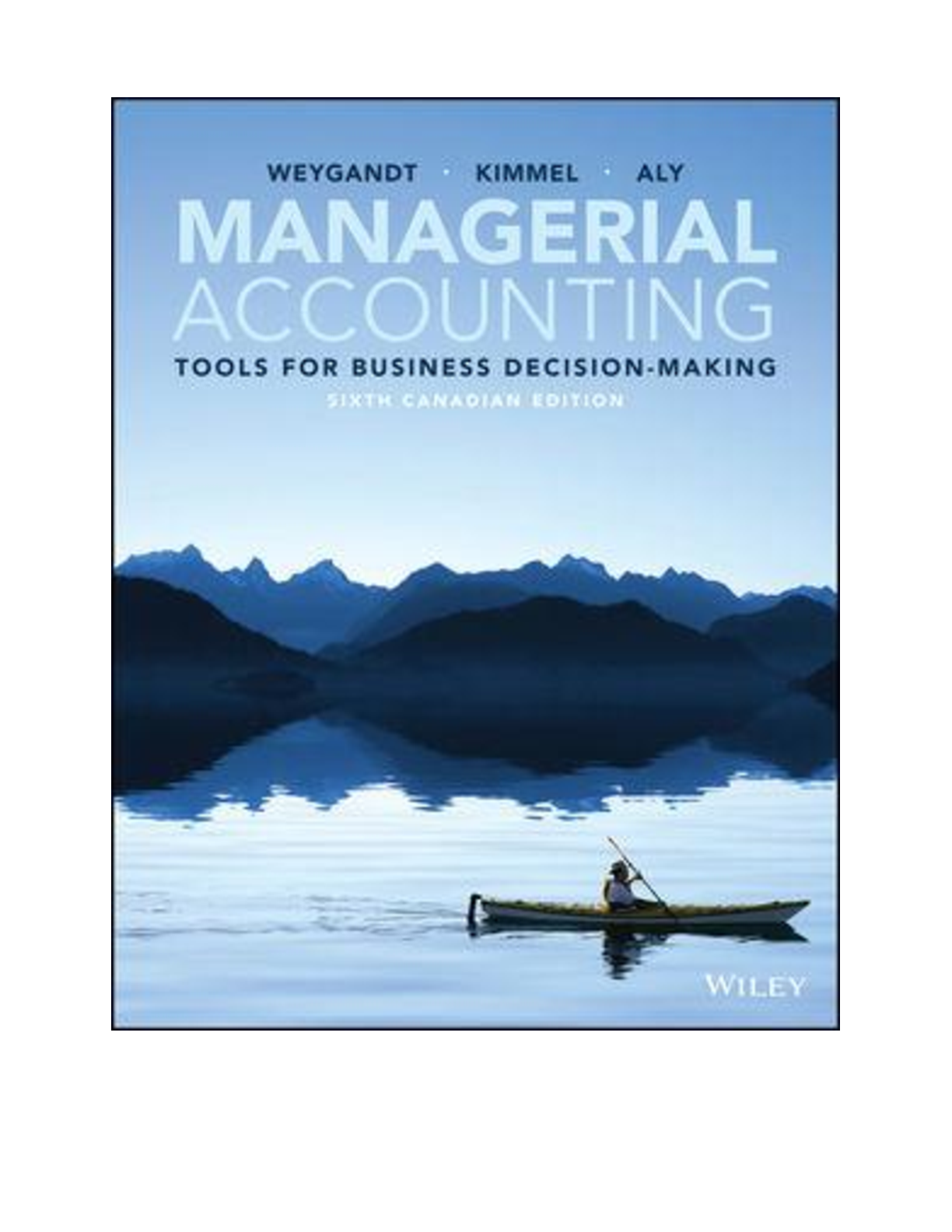Accounting > SOLUTIONS MANUAL > Solutions Manual For Accounting Tools for Business Decision Making, 7e Paul Kimmel, Jerry Weygandt, (All)
Solutions Manual For Accounting Tools for Business Decision Making, 7e Paul Kimmel, Jerry Weygandt, Donald Kieso
Document Content and Description Below
Solutions Manual For Accounting Tools for Business Decision Making, 7e Paul Kimmel, Jerry Weygandt, Donald KiesoCHAPTER 1 Introduction to Financial Statements Learning Objectives 1. Identify the forms... of business organization and the uses of accounting information. 2. Explain the three principal types of business activity. 3. Describe the four financial statements, and how they are prepared. ASSIGNMENT CHARACTERISTICS TABLE Problem Number Description Difficulty Level Time Allotted (min.) 1A Determine forms of business organization. Simple 15–20 2A Identify users and uses of financial statements. Simple 15–20 3A Prepare an income statement, retained earnings statement, and balance sheet; discuss results. Medium 40–50 4A Prepare an Income statement, retained earnings statement, and balance sheet Medium 25–35 5A Determine items included in a statement of cash flows, prepare the statement, and comment. Medium 30–40 6A Comment on proper accounting treatment and prepare a corrected balance sheet. Medium 40–50 ANSWERS TO QUESTIONS 1. The three basic forms of business organizations are (1) sole proprietorship, (2) partnership, and (3) corporation. LO 1 BT: K Difficulty: E TOT: 1 min. AACSB: None AICPA BB: Legal/Regulatory Perspective 2. Advantages of a corporation are limited liability (stockholders not being personally liable for corporate debts), easy transferability of ownership, and ease of raising funds. Disadvantages of a corporation are increased taxation and government regulations. LO 1 BT: K Difficulty: E TOT: 1 min. AACSB: None AICPA BB: Legal/Regulatory Perspective 3. Proprietorships and partnerships receive favorable tax treatment compared to corporations and are easier to form than corporations. They are also owner controlled. Disadvantages of proprietorships and partnerships are unlimited liability (proprietors/partners are personally liable for all debts) and difficulty in obtaining financing compared to corporations. LO 1 BT: K Difficulty: E TOT: 1 min. AACSB: None AICPA BB: Legal/Regulatory Perspective 4. Yes. A person cannot earn a living, spend money, buy on credit, make an investment, or pay taxes without receiving, using, or dispensing financial information. Accounting provides financial information to interested users through the preparation and distribution of financial statements. LO 1 BT: K Difficulty: E TOT: 1 min. AACSB: None AICPA FC: Reporting 5. Internal users are managers who plan, organize, and run a business. To assist management, accounting provides timely internal reports. Examples include financial comparisons of operating alternatives, projections of income from new sales campaigns, forecasts of cash needs for the next year, and financial statements. LO 1 BT: K Difficulty: E TOT: 1 min. AACSB: None AICPA FC: Reporting 6. External users are those outside the business who have either a present or potential direct financial interest (investors and creditors) or an indirect financial interest (taxing authorities, regulatory agencies, labor unions, customers, and economic planners). LO 1 BT: K Difficulty: E TOT: 1 min. AACSB: None AICPA FC: Reporting 7. The three types of business activities are financing activities, investing activities, and operating activities. Financing activities include borrowing money and selling shares of stock. Investing activities include the purchase and sale of property, plant, and equipment. Operating activities include selling goods, performing services, and purchasing inventory. LO 2 BT: K Difficulty: M TOT: 2 min. AACSB: None AICPA FC: Reporting 8. (a) Income statement. (d) Balance sheet. (b) Balance sheet. (e) Balance sheet. (c) Income statement. (f) Balance sheet. LO 3 BT: K Difficulty: M TOT: 2 min. AACSB: None AICPA FC: Reporting Questions Chapter 1 (Continued) 9. When a company pays dividends, it reduces the amount of assets available to pay creditors. Therefore, banks and other creditors monitor dividend payments to ensure they do not put a company’s ability to make debt payments at risk. LO 3 BT: AN Difficulty: M TOT: 2 min. AACSB: Reflective Thinking AICPA BB: Critical Thinking 10. Yes. Net income does appear on the income statement—it is the result of subtracting expenses from revenues. In addition, net income appears in the retained earnings statement—it is shown as an addition to the beginning-of-period retained earnings. Indirectly, the net income of a company is also included in the balance sheet. It is included in the retained earnings account which appears in the stockholders’ equity section of the balance sheet. LO 3 BT: C Difficulty: E TOT: 1 min. AACSB: None AICPA FC: Reporting 11. The primary purpose of the statement of cash flows is to provide financial information [Show More]
Last updated: 1 day ago
Preview 5 out of 1637 pages

Loading document previews ...
Buy this document to get the full access instantly
Instant Download Access after purchase
Buy NowInstant download
We Accept:

Reviews( 0 )
$7.50
Can't find what you want? Try our AI powered Search
Document information
Connected school, study & course
About the document
Uploaded On
Aug 03, 2025
Number of pages
1637
Written in
Additional information
This document has been written for:
Uploaded
Aug 03, 2025
Downloads
0
Views
3


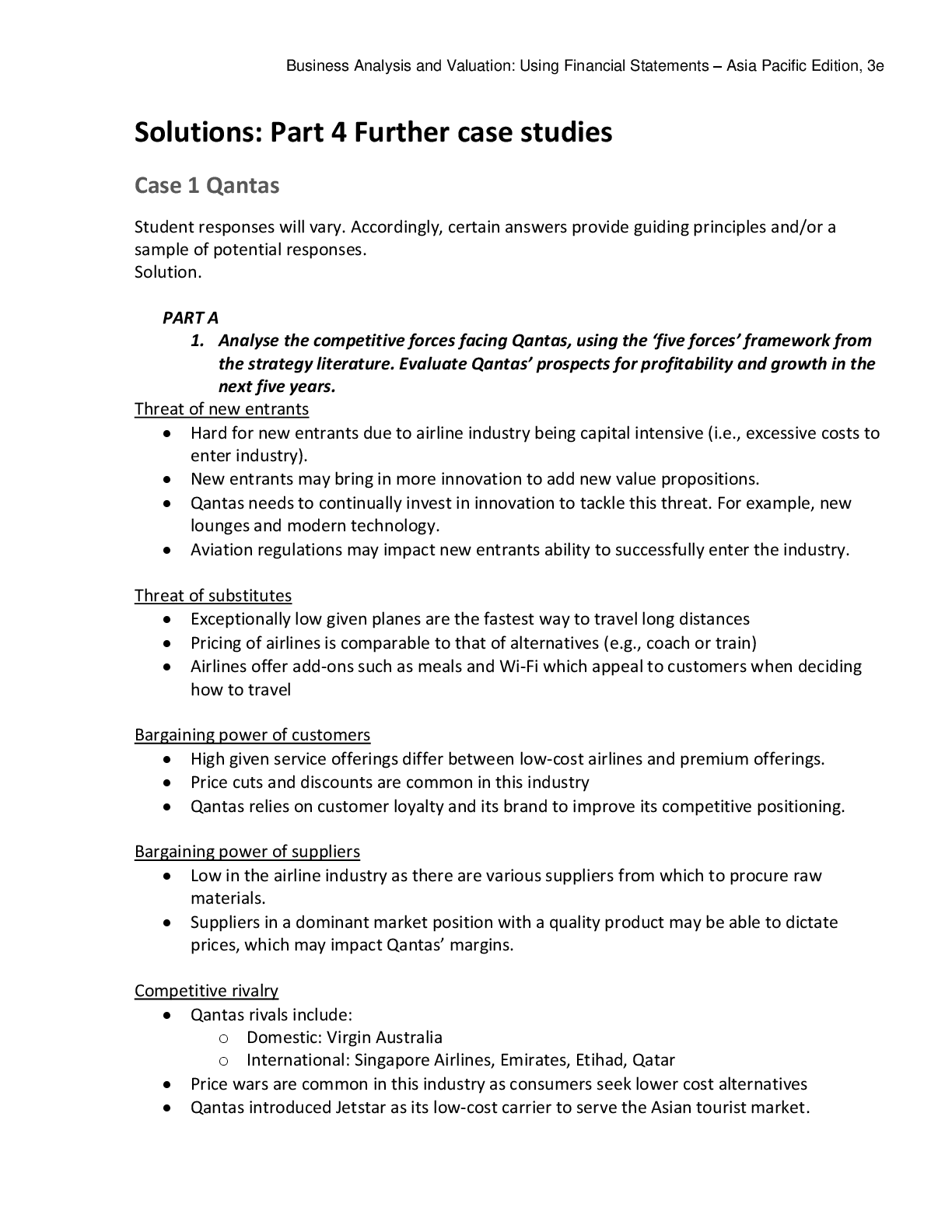

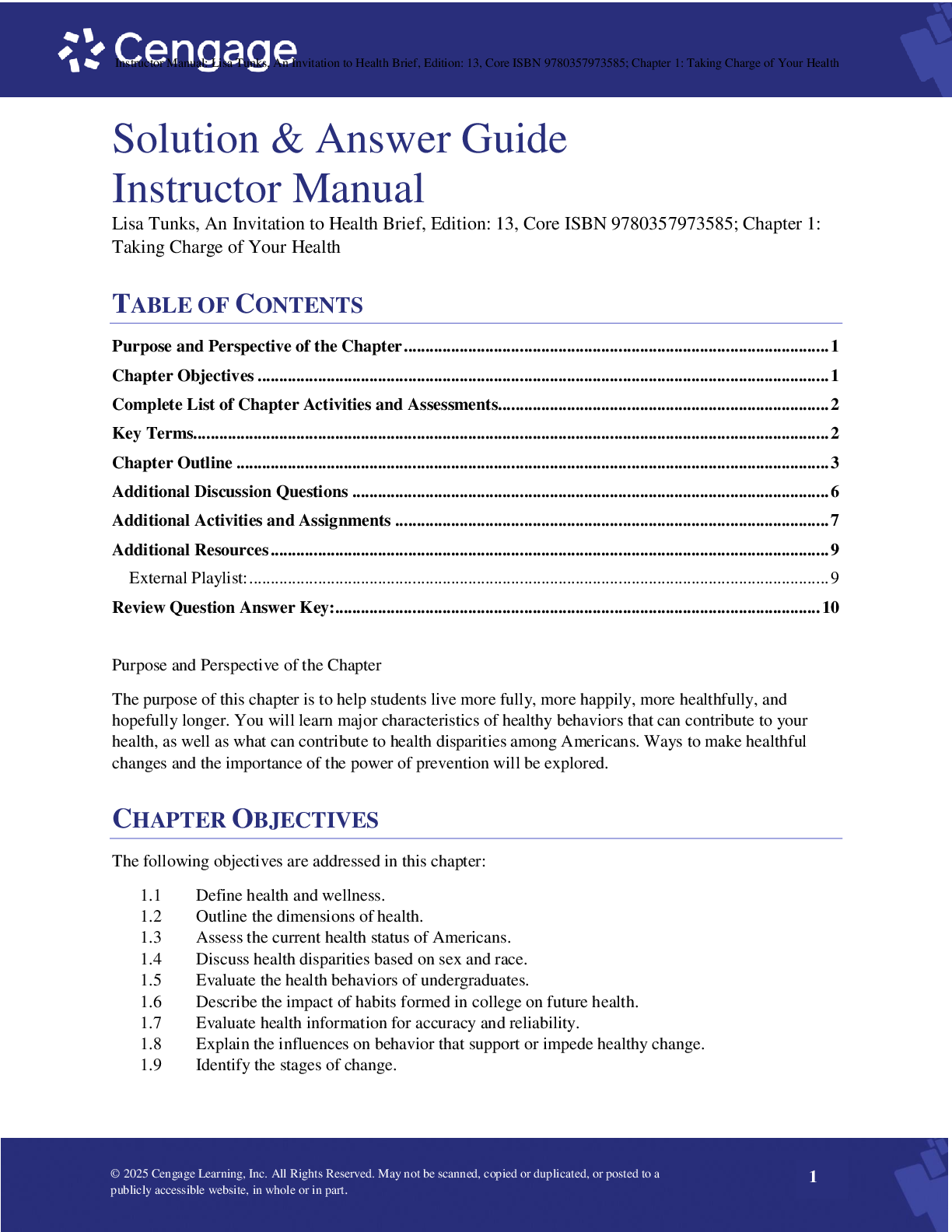
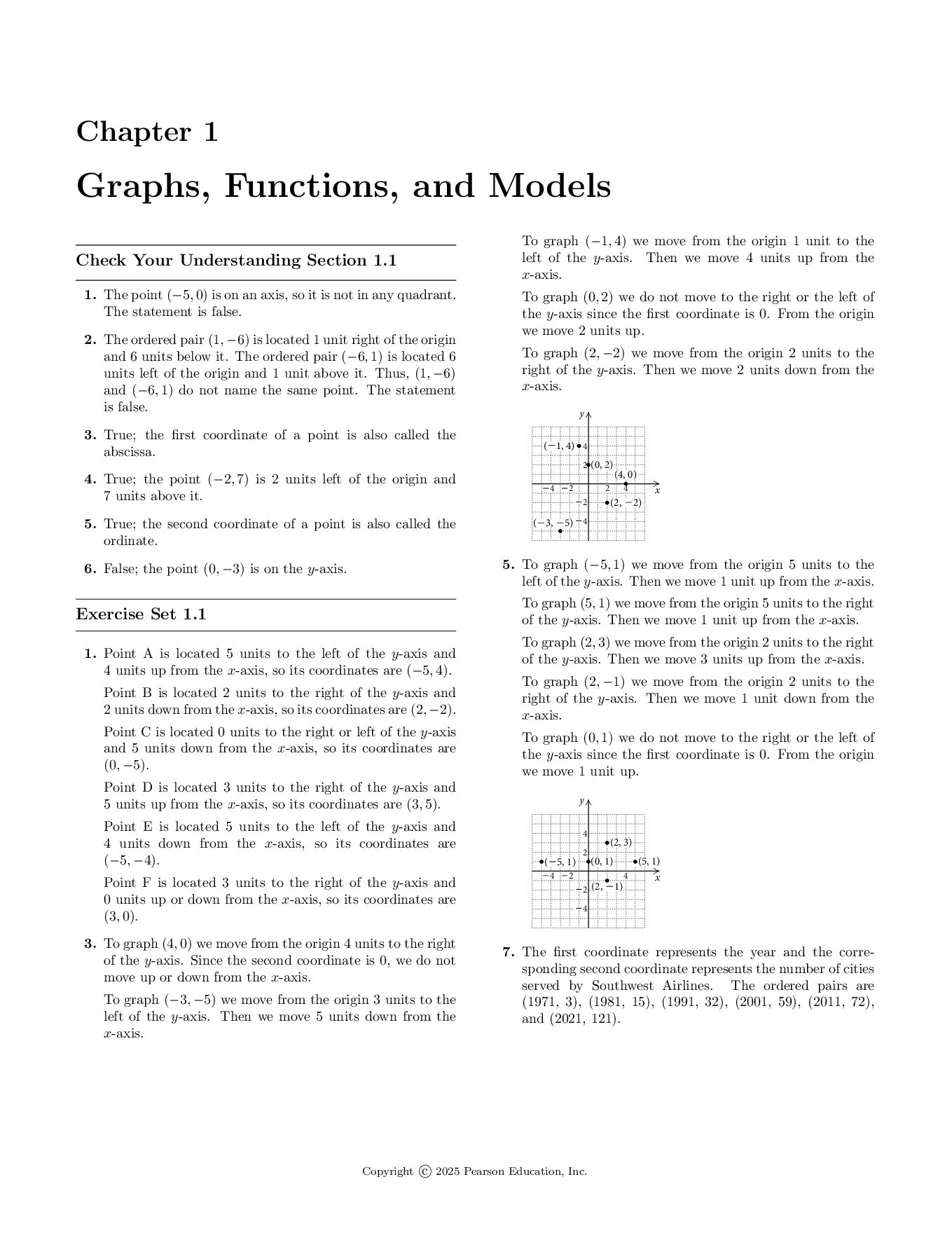
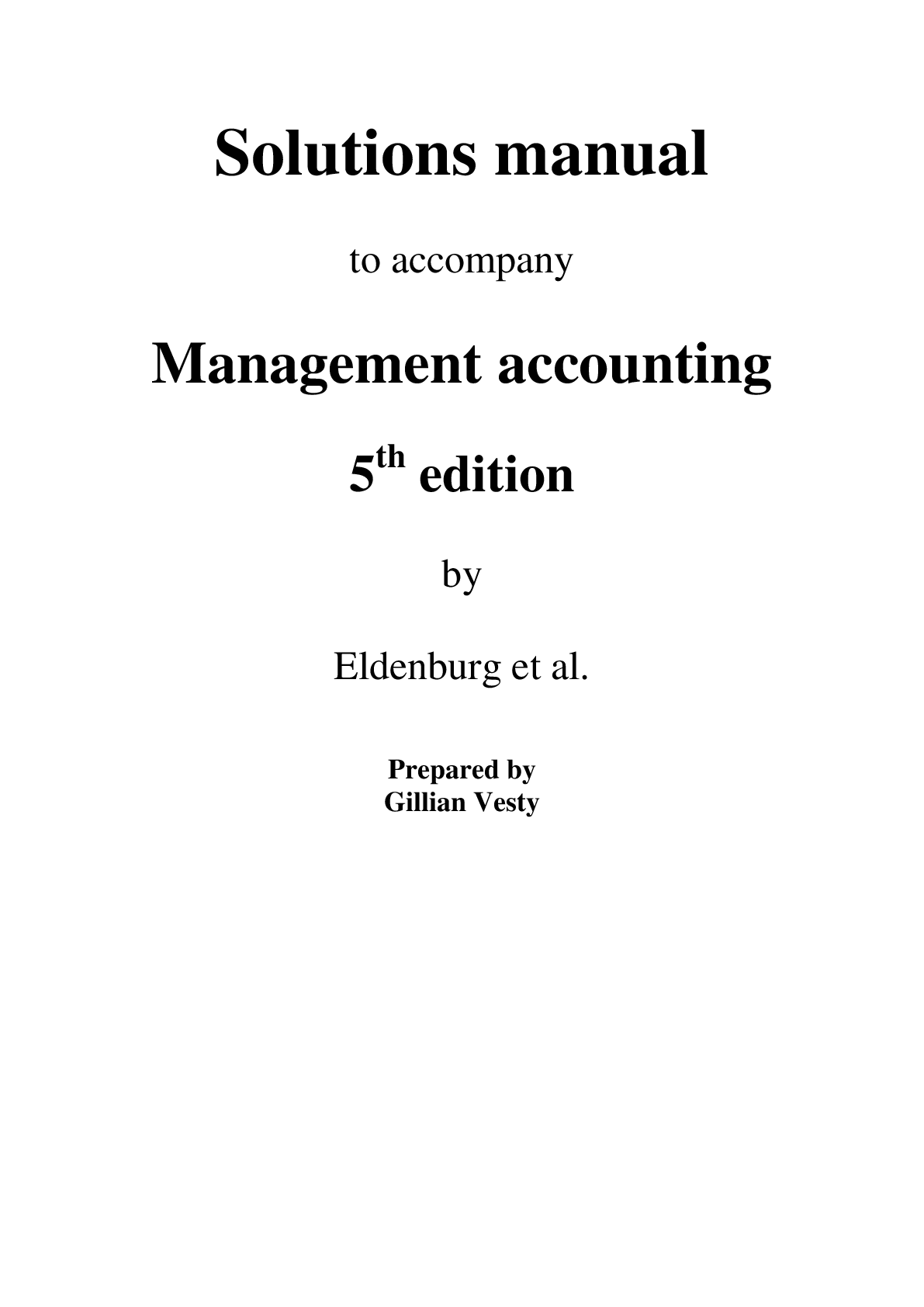
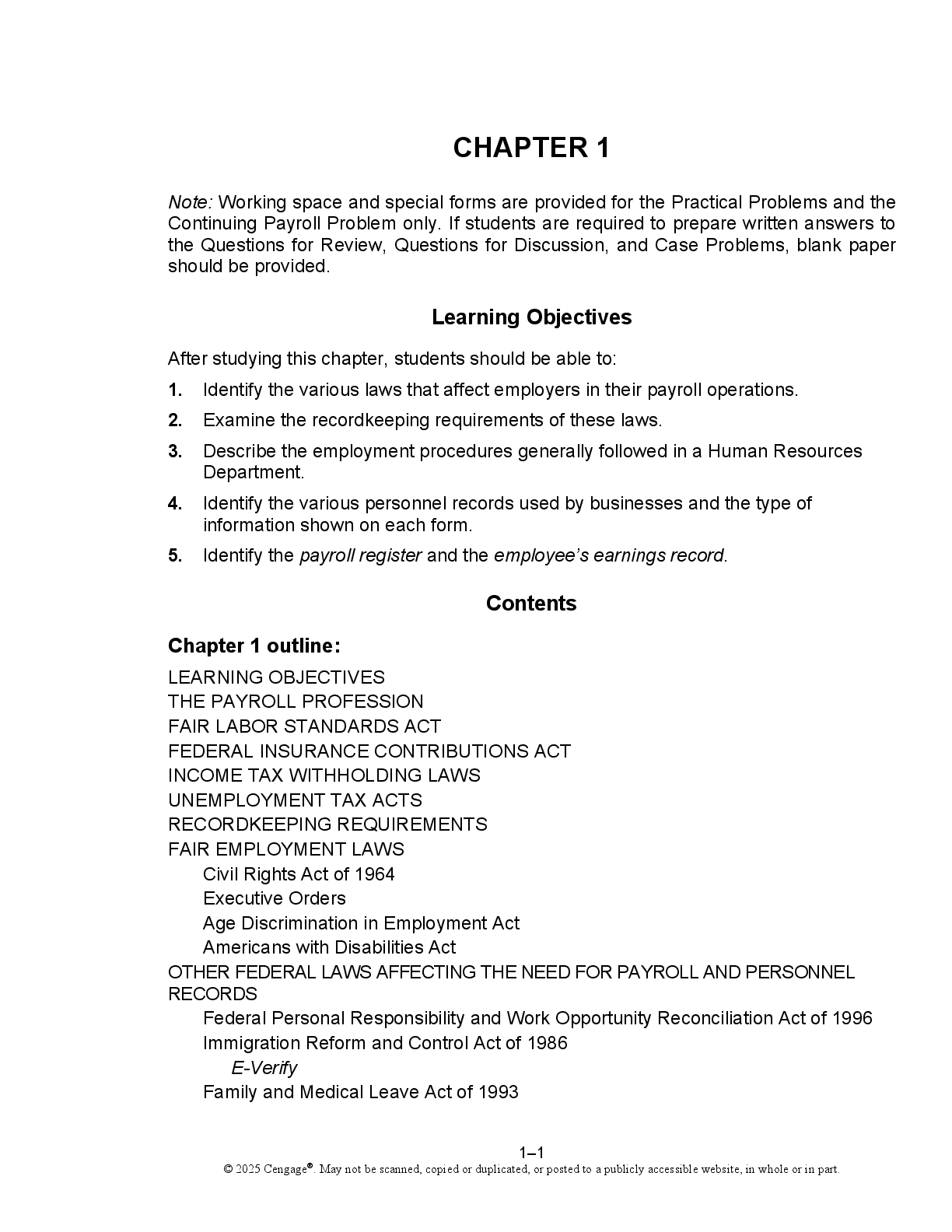
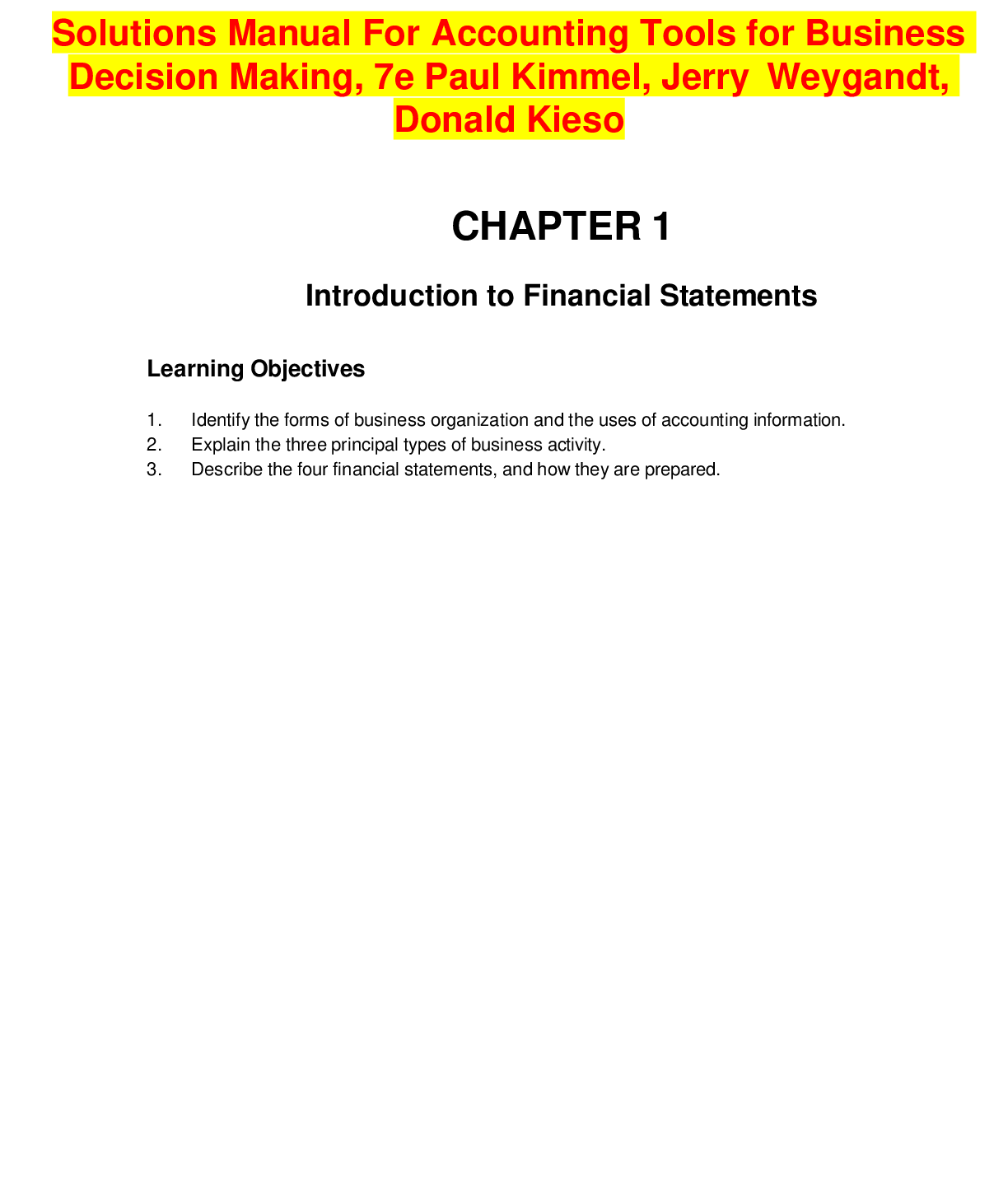
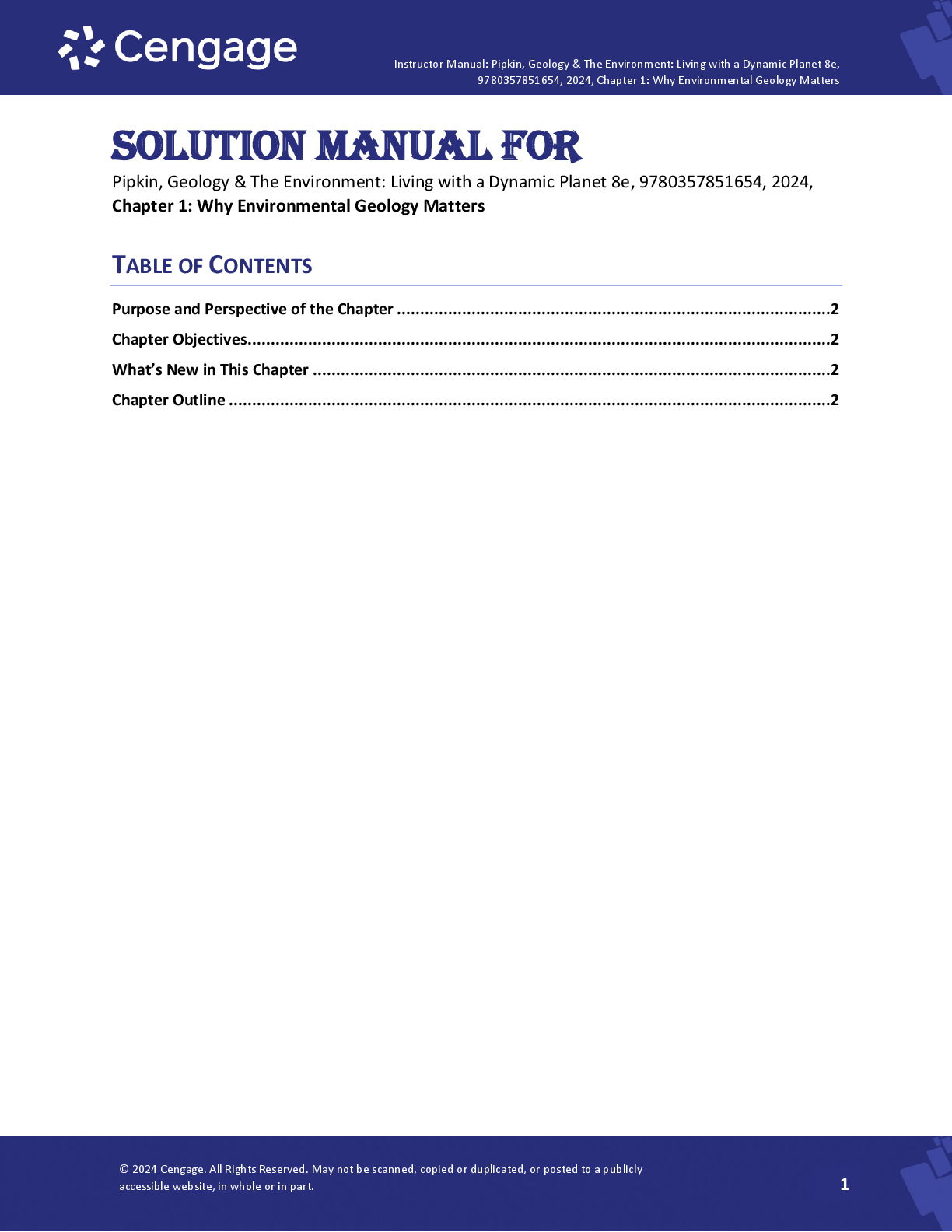

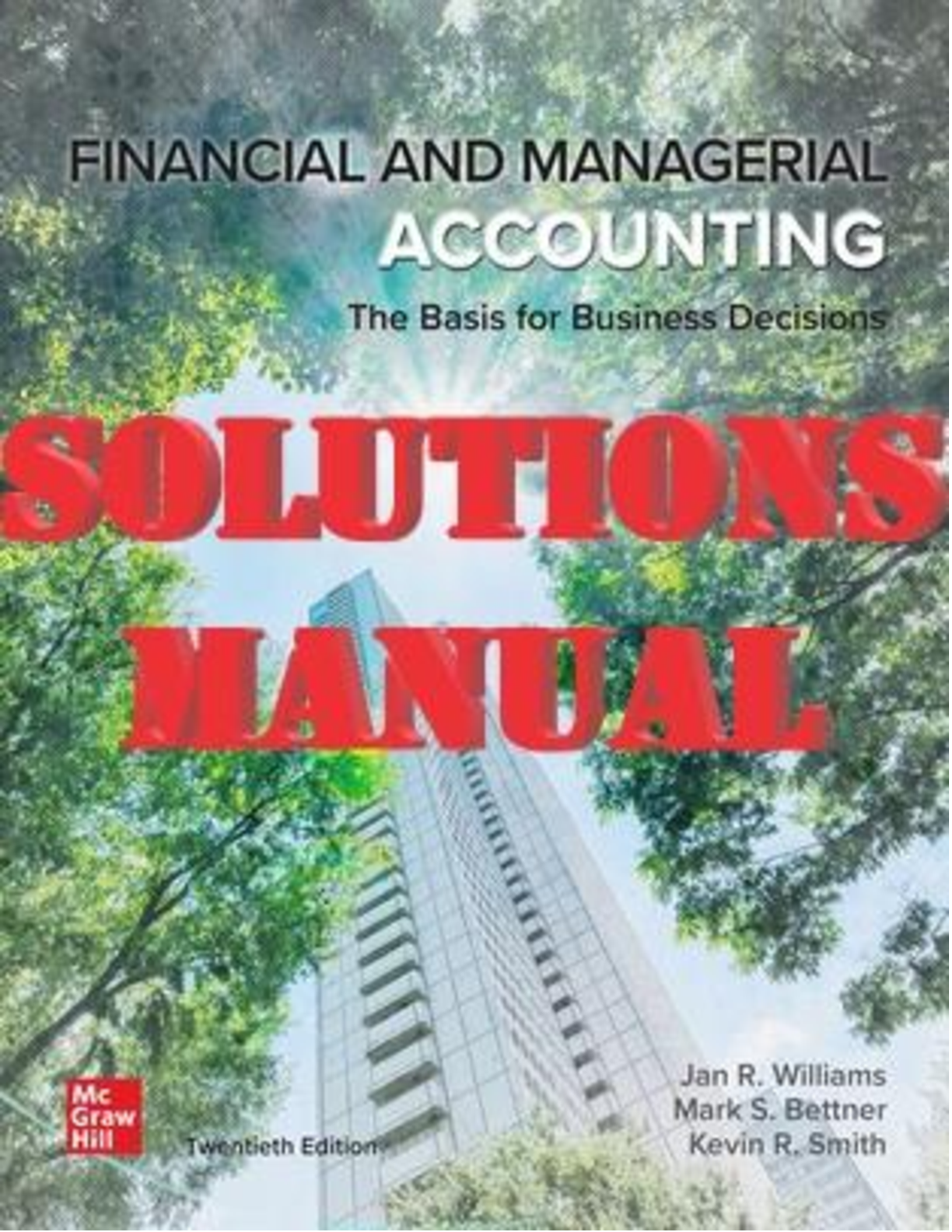


.png)

.png)
.png)
